02/12/2010
ABSTRACT ALGEBRA ON LINE
ABSTRACT ALGEBRA ON LINE
This site contains many of the definitions and theorems from the area of mathematics generally called abstract algebra. It is intended for undergraduate students taking an abstract algebra class at the junior/senior level, as well as for students taking their first graduate algebra course. It is based on the books Abstract Algebra, by John A. Beachy and William D. Blair, and Abstract Algebra II, by John A. Beachy.
The site is organized by chapter. The page containing the Table of Contents also contains an index of definitions and theorems, which can be searched for detailed references on subject area pages. Topics from the first volume are marked by the symbol ![]() and those from the second volume by the symbol
and those from the second volume by the symbol ![]() . To make use of this site as a reference, please continue on to the Table of Contents.
. To make use of this site as a reference, please continue on to the Table of Contents.
- TABLE OF CONTENTS (No frames)
-
TABLE OF CONTENTS (Frames version)
Interested students may also wish to refer to a closely related site that includes solved problems: the
- OnLine Study Guide for Abstract Algebra.
REFERENCES
Abstract Algebra, Second Edition, by John A. Beachy and William D. Blair
ISBN 0-88133-866-4, © 1996, 427 pages
Waveland Press, P.O. Box 400, Prospect Heights, Illinois, 60070, Tel. 847 / 634-0081
Abstract Algebra II
This set of lecture notes was expanded into the following text.
Introductory Lectures on Rings and Modules, by John A. Beachy
ISBN 0-521-64407-0, © 1999, 238 pages
Cambridge University Press, London Mathematical Society Student Texts #47
In addition to the Table of Contents, this page contains an index of definitions and theorems, so it can be searched for detailed references on subject area pages. Topics from the first volume are marked by the symbol
Click here for the version with frames.
The site is maintained by John Beachy as a service to students.
email: beachy@math.niu.edu | John Beachy's homepage | About this document
TABLE OF CONTENTS
 Integers
Integers
 Functions
Functions
 Groups
Groups
 Polynomials
Polynomials
 Rings
Rings Fields
Fields
 Structure of Groups
Structure of Groups Galois Theory
Galois Theory
 Unique Factorization
Unique Factorization
 Modules
Modules Structure of Noncommutative Rings
Structure of Noncommutative Rings
 Ideal Theory of Commutative Rings
Ideal Theory of Commutative Rings
INDEX
Index of Definitions
- abelian group
- action, of a group
- algebraic element
- algebraic extension
- algebraic numbers
- alternating group
- annihilator, of a module
- Artinian module
- Artinian ring
- ascending central series
- associated prime ideal
- automorphism, of a group
- automorphism, of a ring
- bicommutator, of a module
- bilinear function
- bimodule
- center of a group
- centralizer, of an element
- characteristic, of a ring
- codomain, of a function
- commutative ring
- commutator
- completely reducible module
- composite number
- composition, of functions
- composition series, for a group
- composition series, for a module
- congruence class of integers
- congruence, modulo n
- congruence, of polynomials
- conjugate, of a group element
- constructible number
- coset
- cycle of length k
- cyclic group
- cyclic module
- cyclic subgroup
- cyclotomic polynomial
- Dedekind domain
- degree of a polynomial
- degree of an algebraic element
- degree of an extension field
- derived subgroup
- dense subring
- dihedral group
- disjoint cycles
- division ring
- divisor, of a polynomial
- divisor, of an integer
- divisor, of zero
- direct product, of groups
- direct product, of modules
- direct sum, of modules
- direct sum, of rings
- domain, of a function
- equivalence class
- equivalence classes defined by a function
- equivalence relation
- essential submodule
- Euclidean domain
- Euler's phi-function
- even permutation
- extension field
- factor, of a polynomial
- factor, of an integer
- factor group
- factor ring
- faithful module
- field
- finite extension field
- finite group
- finitely generated module
- fixed subfield
- formal derivative
- fractional ideal
- free module
- Frobenius automorphism
- function
- Galois field
- Galois group of a polynomial
- general linear group
- generator, of a cyclic group
- greatest common divisor, of integers
- greatest common divisor, of polynomials
- greatest common divisor, in a principal ideal domain
- group
- group algebra
- group ring
- holomorph (of the integers mod n)
- homomorphism, of groups
- homomorphism, of modules
- homomorphism, of rings
- ideal
- idempotent element, of a ring
- image, of a function
- index of a subgroup
- injective module
- inner automorphism, of a group
- integer
- integral closure
- integral domain
- integral extension
- integrally closed domain
- invariant subfield
- inverse function
- invertible element, in a ring
- irreducible element, in a ring
- irreducible polynomial
- isomorphism, of groups
- isomorphism, of rings
- Jacobson radical, of a module
- kernel, of a group homomorphism
- kernel, of a ring homomorphism
- Krull dimension
- leading coefficient
- least common multiple, of integers
- left ideal
- Legendre symbol
- linear action
- localization at a prime ideal
- maximal ideal
- maximal submodule
- minimal polynomial
- minimal submodule
- module
- Moebius function
- monic polynomial
- multiple, of an integer
- multiplicity, of a root
- nil ideal
- nil radical
- nilpotent element, of a ring
- nilpotent ideal
- Noetherian module
- Noetherian ring
- normal extension
- normal subgroup
- normalizer, of a subgroup
- one-to-one function
- onto function
- odd permutation
- orbit
- order of a group
- order of a permutation
- p-group
- partition of a set
- perfect extension
- permutation
- permutation group
- primary ideal
- primitive polynomial
- principal left ideal
- product, of polynomials
- projective module
- polynomial
- prime ideal, of a commutative ring
- prime ideal, of a noncommutative ring
- prime module
- prime number
- prime ring
- primitive ideal
- primitive ring
- principal ideal
- principal ideal domain
- quadratic residue
- quaternions
- radical, for modules
- radical, of an ideal
- radical extension
- regular element
- relatively prime integers
- right ideal
- ring
- ring of differential operators
- root of a polynomial
- root of unity
- semidirect product
- semiprime ideal
- semiprime ring
- semiprimitive ring
- semisimple Artinian ring
- simple extension
- semisimple module
- separable polynomial
- separable extension
- simple group
- simple ring
- simple extension
- simple module
- skew field
- small submodule
- socle of a module
- solvable by radicals
- split homomorphism
- splitting field
- stabilizer
- subfield
- subgroup
- subring
- Sylow subgroup
- symmetric group
- tensor product
- torsion module
- torsionfree module
- transcendental element
- transposition
- unique factorization domain
- unit, of a ring
- von Neumann regular ring
- well-ordering principle
- zero divisor
Index of Theorems
- An algebraic extension of an algebraic extension is algebraic(6.2.10)
- Artin-Wedderburn theorem(11.3.2)
- Artin's lemma(8.3.4)
- Baer's criterion for injectivity(10.5.9)
- Burnside's theorem(7.2.8)
- Cauchy's theorem(7.2.10)
- Cayley's theorem(3.6.2)
- Characteristic of an integral domain(5.2.10)
- Characterization of completely reducible modules(10.2.9)
- Characterization of completely reducible rings(10.5.6)
- Characterization of constructible numbers(6.3.6)
- Characterization of Dedekind domains(12.1.6)
- Characterization of equations solvable by radicals(8.4.6)
- Characterization of finite fields(6.5.2)
- Characterization of finite normal separable extensions(8.3.6)
- Characterization of free modules(10.2.3)
- Characterization of integral elements(12.2.2)
- Characterization of internal direct products(7.1.3)
- Characterization of invertible functions(2.1.8)
- Characterization of the Jacobson radical(11.2.10)
- Characterization of linear actions(7.9.5)
- Characterization of nilpotent groups(7.8.4)
- Characterization of Noetherian modules(10.3.3)
- Characterization of normal subgroups(3.8.7)
- Characterization of projective modules(10.2.11)
- Characterization of semisimple Artinian rings(11.3.4)
- Characterization of prime ideals(11.1.3)
- Characterization of semidirect products(7.9.6)
- Characterization of semiprime ideals(11.1.7)
- Characterization of semisimple modules(10.5.3)
- Characterization of subgroups(3.2.2)
- Characterization of subrings(5.1.3)
- Chinese remainder theorem, for integers(1.3.6)
- Chinese remainder theorem, for rings(5.7.9)
- Class equation(7.2.6)
- Class equation (generalized)(7.3.6)
- Classification of cyclic groups(3.5.2)
- Classification of groups of order less than sixteen
- Classification of groups of order pq(7.4.6)
- Cohen's theorem(12.4.1)
- Computation of Euler's phi-function(1.4.8)
- Construction of extension fields(4.4.8)
- Correspondence between roots and linear factors(4.1.11)
- Dedekind's theorem on reduction modulo p
- Properties of Dedekind domains(12.1.4)
- Degree of a tower of finite extensions(6.2.4)
- DeMoivre's theorem(A.5.2)
- The direct product of nilpotent groups is nilpotent(7.8.2)
- Disjoint cycles commute(2.3.4)
- Division algorithm for integers(1.1.3)
- Division algorithm for polynomials(4.2.1)
- Eisenstein's irreducibility criterion(4.3.6)
- Endomorphisms of indecomposable modules(10.4.6)
- Existence of finite fields(6.5.7)
- Existence of greatest common divisors (for integers)(1.1.6)
- Existence of greatest common divisors (for polynomials)(4.2.4)
- Existence of greatest common divisors, in a principal ideal domain(9.1.6)
- Existence of irreducible polynomials(6.5.12)
- Existence of maximal submodules(10.1.8)
- Existence of quotient fields(5.4.4)
- Existence of splitting fields(6.4.2)
- Existence of tensor products(10.6.3)
- Euclidean algorithm for integers
- Euclidean algorithm for polynomials(Example 4.2.3)
- Euclid's lemma characterizing primes(1.2.5)
- Euclid's theorem on the infinitude of primes(1.2.7)
- Euler's theorem(1.4.11)
- Euler's theorem(Example 3.2.12)
- Euler's criterion(6.7.2)
- Every Euclidean domain is a principal ideal domain(9.1.2)
- Every field of characteristic zero is perfect(8.2.6)
- Every finite extension is algebraic(6.2.9)
- Every finite separable extension is a simple extension(8.2.8)
- Every finite field is perfect(8.2.7)
- Every PID is a UFD(9.1.12)
- Finite integral domains are fields(5.1.8)
- Every finite p-group is solvable(7.6.3)
- Finitely generated torsion modules over a PID(10.3.9)
- Finitely generated torsionfree modules over a PID(10.7.5)
- First isomorphism theorem(7.1.1)
- Fitting's lemma for modules(10.4.5)
- Frattini's argument(7.8.5)
- Fundamental theorem of algebra(8.3.10)
- Fundamental theorem of arithmetic(1.2.6)
- Fundamental theorem of finitely generated modules over a PID(10.7.5)
- Fundamental theorem of Galois theory(8.3.8)
- Fundamental theorem of finite abelian groups(7.5.4)
- Fundamental homomorphism theorem for groups(3.8.8)
- Fundamental homomorphism theorem for rings(5.2.6)
- F[x] is a principal ideal domain(4.2.2)
- On Galois groups(8.4.3, 8.4.4)
- Galois groups of cyclotomic polynomials(8.5.4)
- Galois groups over finite fields(8.1.7)
- Galois groups and permutations of roots(8.1.4)
- Gauss's lemma(4.3.4)
- When the group of units modulo n is cyclic(7.5.11)
- Hilbert basis theorem(10.3.7)
- Hilbert's nullstellensatz(12.4.9)
- Hopkin's theorem(11.3.5)
- Ideals in the localization of an integral domain(5.8.11)
- Impossibility of trisecting an angle(6.3.9)
- Incomparability, lying-over, and going up(12.2.9)
- Insolvability of the quintic(8.4.8)
- Irreducibility of cyclotomic polynomials(8.5.3)
- Irreducible ideals are primary(12.3.6)
- Irreducible polynomials over R(A.5.7)
- Jacobson density theorem(11.3.7)
- Jordan-Holder theorem for groups(7.6.10)
- Jordan-Holder theorem for modules(10.4.2)
- Kronecker's theorem(4.4.8)
- Krull's theorem(12.4.6)
- Krull-Schmidt theorem(10.4.9)
- Lagrange's theorem(3.2.10)
- Lasker-Noether decomposition theorem(12.3.10)
- Maschke's theorem(10.5.8)
- Maximal subgroups in nilpotent groups(7.8.5)
- Moebius inversion formula(6.6.6)
- The multiplicative group of a finite field is cyclic(6.5.10)
- Nakayama's lemma(11.2.8)
- The nil radical is nilpotent (in Noetherian rings)(12.4.3)
- Number of irreducible polynomials over a finite field(6.6.9)
- Number of roots of a polynomial(4.1.12)
- Order of a permutation(2.3.8)
- Order of the Galois group of a polynomial(8.1.6)
- Partial fractions(Example 4204)
- Every p-group is abelian(7.2.9)
- Every permutation is a product of disjoint cycles(2.3.5)
- The polynomial ring over a UFD is a UFD(9.2.6)
- The ring of power series is Noetherian(12.4.2)
- Prime and maximal ideals(5.3.9)
- Prime ideals in a principal ideal domain(5.3.10)
- Generalized principal ideal theorem(12.4.7)
- Quadratic reciprocity law(6.7.3)
- Rational roots(4.3.1)
- Remainder theorem(4.1.9)
- Schur's lemma(10.1.11)
- Second isomorphism theorem(7.1.2)
- Simplicity of PSL(2,F)(7.7.9)
- Simplicity of the alternating group(7.7.4)
- The smallest nonabelian simple group(7.10.7)
- On solvable groups(7.6.7, 7.6.8)
- Splitting fields are unique(6.4.5)
- Structure of simple extensions(6.1.6)
- Subgroups of cyclic groups(3.5.1)
- Sylow's theorems(7.4.1, 7.4.4)
- When the symmetric group is solvable(7.7.2)
- Unique factorization of integers(1.2.6)
- Unique factorization of polynomials(4.2.9)
- Wedderburn's theorem(8.5.6)
- Source : http://www.math.niu.edu/~beachy/aaol/contents.html#index
07:32 Publié dans ABSTRACT ALGEBRA ON LINE | Lien permanent | Commentaires (0) |  |
|  del.icio.us |
del.icio.us |  |
|  Digg |
Digg | ![]() Facebook
Facebook
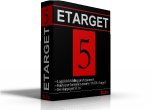










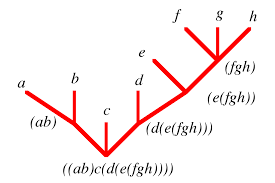

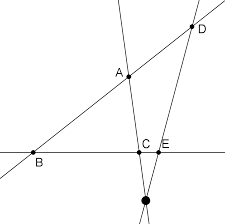
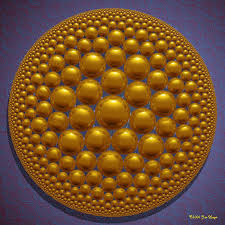
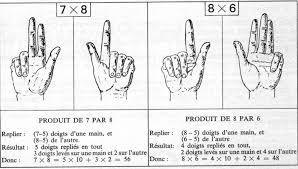


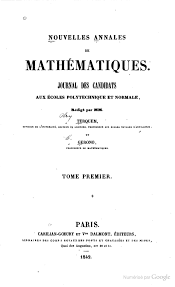

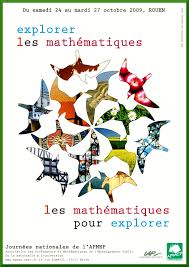
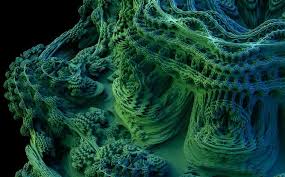


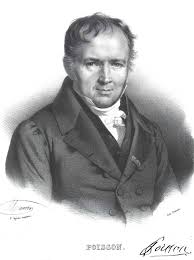

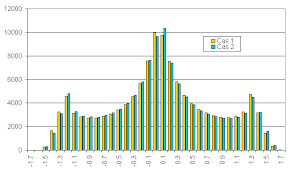
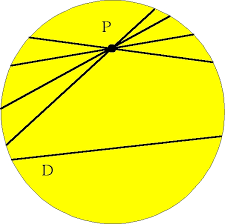


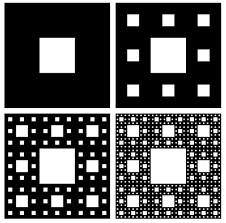
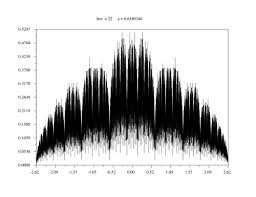
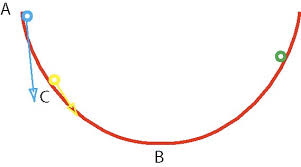

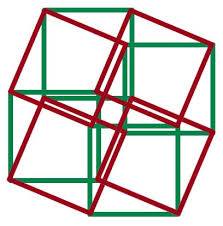



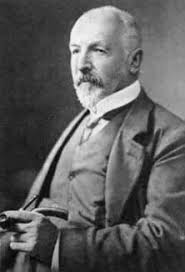

Les commentaires sont fermés.